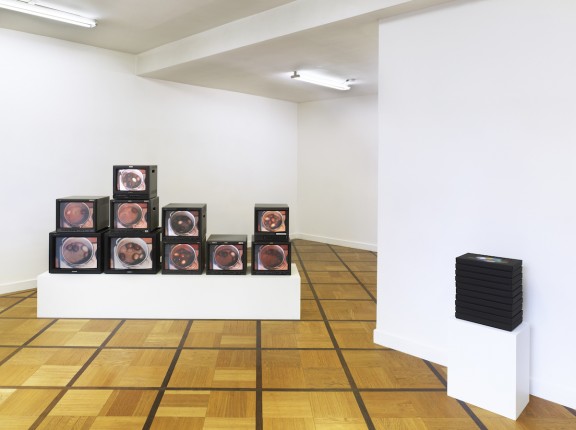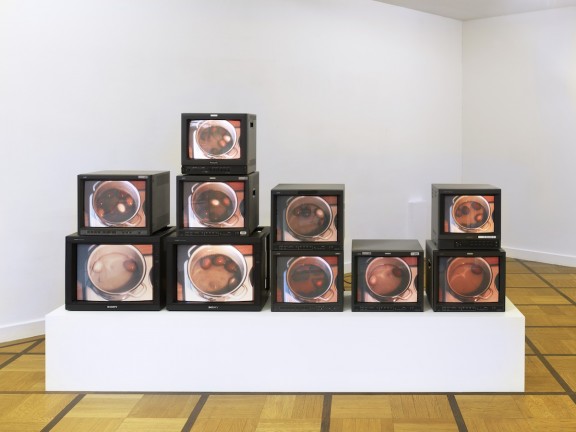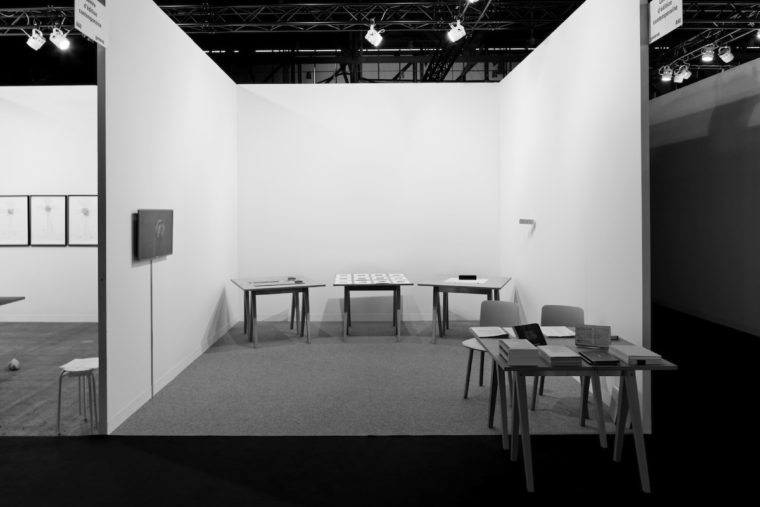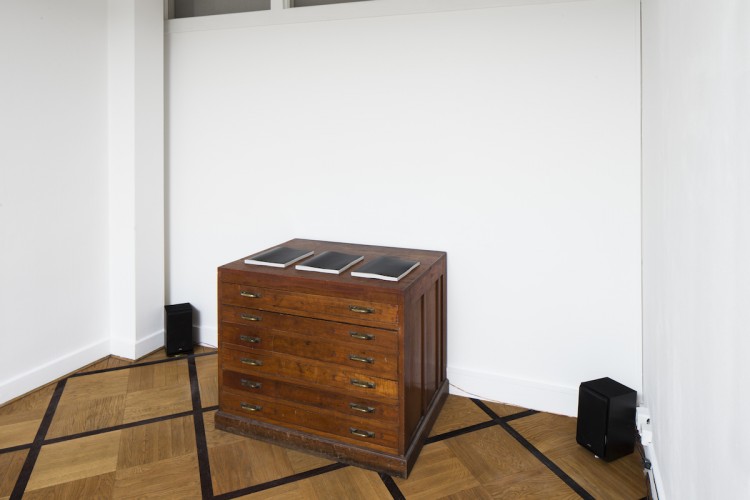Jonathan Monk
Egg
Exhibition from February 21 until April 27, 2013
Opening on February 20, 2013
JM: « For a little book that I just made with Galerie Yvon Lambert, The Making of Ten Posters, Ten Languages, Ten Colours, Ten Words, Ten Euros, we asked the printers if they would photograph their process. Actually, it started with a poster project that we had printed in Riga. Without us asking anything, the printers sent us photographs of the posters coming out of the press and of the printers holding them up. Upon seeing these pictures, we thought it would be perfect to make a book out of them. It’s really simple, basically to just show how the printers made the posters. But then we decided to ask the printers of the book, in Montreuil, to take pictures. We sent them a Polaroid camera and they agreed to document their whole process of making the book.»
This extract from a conversation explains one, or one of the systems developed by Jonathan Monk. Monk proceeds by method, by declension. He creates scores that, once established, are carried through, this second part not being necessarily the most important step.
Before our present exhibition of Jonathan Monk’s work, we have had a glimpse of it here at the Centre d’édition contemporaine in 2003 when presenting the group show Filière papier-filière expo, a collaboration with curators Eva Svennung and Alexis Vaillant. This show brought together several invited curator-editors who worked out new publications. The CEC co-produced the newspaper project Pacemaker with their former agency, Toasting Agency. In the first issue, the tourist Jonathan Monk published his thanks after visiting Paris in 1982:
«I would like to take this opportunity to thank anyone who might have appeared in any photographs I took whilst in Paris during the summer of 1982. Jonathan Monk 2003. »
This short acknowledgment contains all the ironic distance and dry wit of Monk’s work in which we detect as a hint and behind the candour of the intentions his point of view on artistic
production, a broader form of editing and some of its parameters: image reproduction rights, copyright, artistic property.
Jonathan Monk is the perfect candidate for edition, because for him original and copy most importantly represent endless and free possibilities of crossings, of clouding issues and of conceptualization, all this above their commercial value. Monk revisits some artistic standards often in the form of multiples, like an actor who would re-enact his classics, practice his scales.
Monk uses artistic references, works of art, or major books as starting points to his shifts and declensions, but also enjoys collaborations and exchanges with other artists-friends. More than ‘art on art’ or simple quoting, Monk practises the art of discrepancy where revisiting becomes a place for irony and conceptual multiplications as well as for association of ideas. His materials might be historical and artistic but also from everyday life, the daily intangibles, the overproduction of signs and images. He maintains an ironic distance to art – most often to conceptual art – but also takes a similar amused and critical look at society and its excesses. Monk stages and experiences the proliferation of signs, might they be artistic or consumerist, as a daily invasion of our living and mental space. He recomposes and reorganizes these signs in order to reveal all their absurdity with a discrepancy that is more often affective and autobiographical than it seems.
For the CEC, Jonathan Monk has imagined Soft Boiled Eggs, an edition of a series of unique Super 8 films. The making of these films is based on the duration of a Super 8 film cartridge and on the time it takes to cook an egg. An edition with copies produced every two and a half minutes, a mechanical possibility of making an edition. In a same pan, Monk adds an egg every two and a half minutes: in the first film, we see only one egg, in the second two eggs, etc., until ten eggs in the tenth film. If this statement might seem simple and old-fashioned, it probably suggests an innocent imitation of historical and more conceptual eggs or series of eggs; we think of Manzoni, Broodthaers, Kippenberger… and also underlines the idea of egg as an object, the perfect multiple. For Jonathan Monk, the idea appears unavoidable: …«I like boiled eggs and I couldn’t escape from them! – for me they represented the beginning of something… in this case the egg and not the chicken -… »
The finalised edition consists of a Super 8 film roll, one DVD transfer and a certificate of authenticity signed by the artist. It is housed in a black box, carefully hand painted with ten coloured eggs. An Easter edition, if you like.



